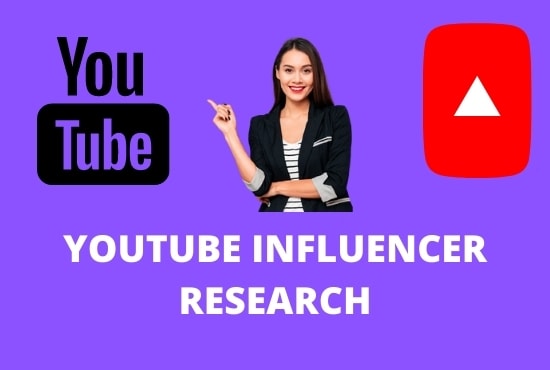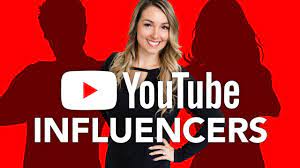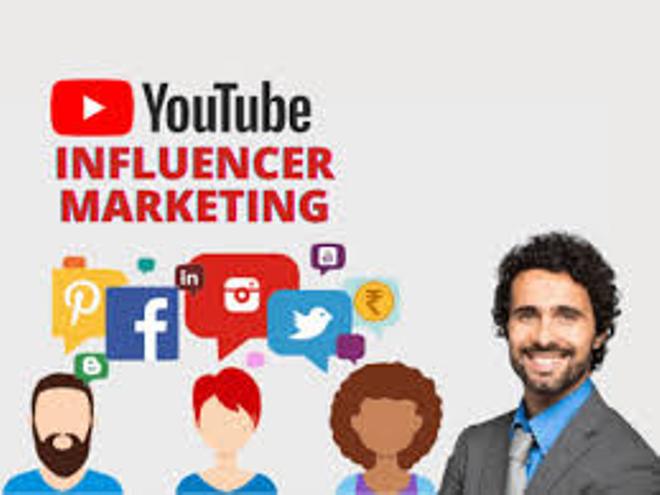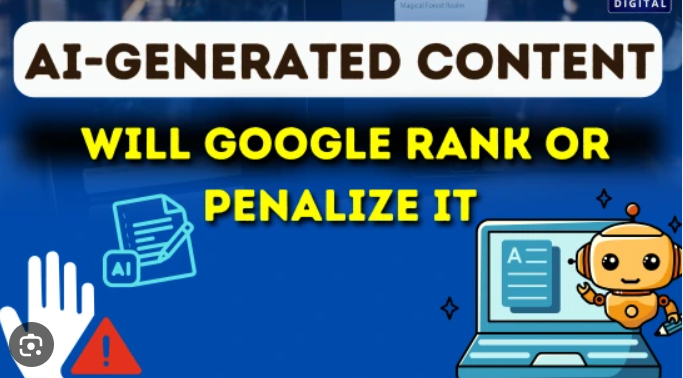Influencer marketing has cemented its position as one of the most powerful and effective strategies in the modern marketing landscape. In an era where consumers are increasingly wary of traditional advertising, they turn to the individuals they trust, admire, and respect for product and service recommendations. This fundamental shift in consumer trust is the bedrock of influencer marketing’s success, with word-of-mouth recommendations continuing to drive a significant portion of all purchase decisions.
Among all platforms, YouTube stands out as an unparalleled powerhouse. With its massive global reach and a format built on engaging, in-depth video content, it offers brands a unique opportunity to connect with audiences in a genuine and high-impact way. For any brand looking to build awareness, drive consideration, and boost conversions, mastering YouTube Influencer Marketing is no longer optional, but it is essential.

What is Influencer Marketing?
Influencer marketing is a strategic form of social media marketing that centers on collaborations between a brand and an online social media influencer. An influencer is an individual who has built a dedicated social following and is regarded as an expert, authority, or trusted voice within their respective niche or domain. These collaborations involve the influencer mentioning or endorsing a brand’s product or service to their audience. The fundamental effectiveness of this strategy stems from the immense trust that followers place in their chosen creators.
An influencer’s recommendation acts as a powerful form of social proof, significantly lowering the barrier to entry for potential customers who might otherwise be skeptical of a direct brand message. The goal of these collaborations can range from simply improving brand recognition to generating direct product sales.
Unique Value of YouTube Influencer Marketing
YouTube, with over two billion monthly logged-in users, is the world’s largest video platform and the second-largest search engine. This vast, engaged audience makes it an incredibly effective channel for every stage of the marketing funnel.
Why Prioritize YouTube?
Massive Reach and Depth: YouTube provides the perfect environment for long-form video content, which allows for more in-depth tutorials, storytelling, and detailed product reviews, building deep trust with the audience.
High-Impact Engagement
Video content is inherently more captivating than static text or images, leading to longer watch times and deeper audience engagement.
Full-Funnel Effectiveness
Brand Awareness – Collaborating with mega-influencers can quickly introduce your brand to a widespread, relevant audience.
Consideration – Influencer videos can educate and provide valuable, detailed information, helping audiences evaluate a product or service.
Conversion – Influencers can drive direct sales through the use of unique links, vanity URLs, and special discount codes in the video description.
Content Longevity and SEO – Unlike ephemeral content on other platforms, YouTube videos have a long shelf life. They are indexed by search engines, meaning they can continue to drive traffic and sales for months, or even years, after being posted.

Latest Features and Trends
To develop a cutting-edge strategy, marketers must incorporate the latest platform features and industry trends.
Dominance of YouTube Shorts
The rise of YouTube Shorts is the single most significant trend, making bite-sized, vertical video an indispensable part of any YouTube strategy.
Massive Discovery – Shorts act as a major discovery platform, with billions of daily views, introducing brands to new audiences far beyond an influencer’s existing subscriber base.
Cross-Channel Synergy – Shorts are effective when used in a cross-channel strategy, often repurposing content from longer videos or other platforms like TikTok and Instagram Reels.
Micro and Nano-Influencer Power – Micro-influencers (typically 10K-100K followers) and nano-influencers (under 10K followers) thrive on Shorts. Their higher engagement rates (often 4-8%) and authentic content make them highly effective and cost-efficient partners for targeted campaigns.
Rise of Authentic and Community-Focused Content
Authenticity remains the most important currency in influencer marketing.
Genuine Storytelling – Consumers favor genuine storytelling, behind-the-scenes glimpses, and honest reviews over overly polished commercials. This builds greater trust.
Interactive Community Engagement – Live features like YouTube Live Streaming are increasingly popular for product launches, real-time Q&A sessions, and exclusive events, fostering a strong, engaged community.
Collaborative Content Creation – Brands are moving away from merely placing ads in an influencer’s video to truly co-creating content. This ensures the message is seamlessly integrated into the influencer’s style and resonates organically with their followers.
Integration of AI in Influencer Marketing
Artificial Intelligence is playing an increasing role in optimizing YouTube influencer marketing campaigns.
Influencer Discovery and Vetting – AI tools streamline the process of finding the right influencers by analyzing audience demographics, brand alignment, and predicting performance, moving beyond simple follower counts.
Workflow Automation – AI can automate parts of campaign management, such as personalizing outreach emails and streamlining content creation (e.g., automated video editing).
Advanced Analytics – AI-powered tools are essential for conducting sentiment analysis on comments and reviews to gauge brand perception and for tracking purchase trends beyond simple clicks.
Developing a Successful YouTube Influencer Marketing Strategy
A successful campaign moves systematically from setting clear goals to meticulous measurement. The process outlined in the user brief is still highly relevant, with modern updates.
Set Clear Objectives and Define Your Niche
Any effective strategy begins with defining measurable goals.
Objectives – Goals should be specific (e.g., increase brand awareness by X%, drive Y conversions, or achieve Z click-through rate).
Key Performance Indicators (KPIs)
Awareness – New subscribers, video views, impressions.
Engagement/Consideration – Likes, comments, shares, watch time, average view duration.
Conversion – Click-through rates (CTR), conversions via unique promo/vanity codes, sales volume.
Define Target and Brand Positioning
You must intimately understand the audience you are trying to reach through YouTube influencer marketing.
Audience Deep Dive – Go beyond basic demographics. Understand their pain points, what their interests, likes, and dislikes are, and how they currently discover and evaluate new brands or products.
Content Alignment – The influencer’s content and audience must be a perfect match for your brand values and product niche. An authentic fit is crucial for campaign credibility.

Identifying and Vetting Potential Influencers
Selecting the right partner is the most critical step.
Prioritize Engagement over Follower Count – High engagement rates, especially those seen with micro and nano-influencers, often indicate a more dedicated and trusting audience.
Audience Authenticity – Use tools to verify that the influencer’s followers and engagement are genuine, checking for red flags like spammy comments or a poor engagement-to-follower ratio.
Relationship Focus – Seek out creators for long-term partnerships. Ongoing collaborations amplify trust and generally lead to better long-term results than one-off, transactional campaigns.
Creating an Effective Content Brief
A great brief provides direction while allowing for creative freedom.
Clear Expectations – State the main goal, product use guidelines, key talking points, required disclosures, and posting deadline clearly.
Creative Autonomy – Let the creator lead. They know their audience best. Give them the freedom to integrate your product into their unique storytelling style.
Content Deliverables – Specify the format (long-form video, dedicated video, mid-roll integration, YouTube Short, or a combination). For integrations, specify the length and placement (pre-roll, mid-roll, or post-roll).
| Content Type | Primary Goal | Key Content Ideas (2024 Trends) |
| Long-Form Video | Consideration, Conversion | Detailed product reviews, in-depth tutorials, “Day in the Life” vlogs with product integration, and comprehensive comparisons. |
| YouTube Shorts | Discovery, Awareness, Virality | Quick product demos/hacks, repurposing “money shots” from long-form videos, joining trending challenges, and behind-the-scenes snippets. |
| Live Stream | Community, Trust, Sales | Real-time Q&A with the product, live unboxing, exclusive event/product launch mentions. |
Tracking and Measurement of Performance
Meticulous tracking is non-negotiable for proving ROI.
Conversion Tracking Tools – Use unique Vanity URLs, custom Promo Codes, or dedicated Affiliate Links for each influencer. This allows for direct attribution of clicks and sales, making it easy to see which creators drive the best value.
Sentiment Analysis – Go beyond numerical comments. Analyze audience feedback to gauge whether brand perception is positive, negative, or neutral.
Beyond Views and Likes – Focus on deep engagement metrics (comments, shares) and conversion-focused KPIs like Cost Per Acquisition (CPA) and overall Return on Investment (ROI). Analyze the performance of your cross-promotion efforts and content repurposing as well.
By embracing authenticity, leveraging the power of short-form video like YouTube Shorts, and utilizing modern tools for strategic planning and measurement, brands can unlock the immense potential of YouTube Influencer Marketing.










